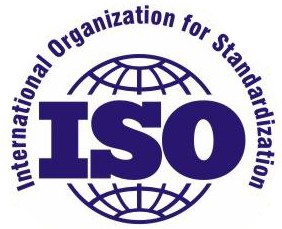
The International Organization for Standardization (ISO) is an international standard-setting body composed of representatives from various national standards organizations. ISO is a non-governmental organization that forms a bridge between the public and private sectors, and is the largest standards organization in the world. Many of its member institutes are part of the governmental structure of their countries, or are mandated by their government. Some members have their roots uniquely in the private sector, having been set up by national partnerships of industry associations. Therefore, ISO enables a consensus to be reached on solutions that meet both the requirements of business and the broader needs of society. The ISO story began in 1946 when delegates from 25 countries met at the Institute of Civil Engineers in London and decided to create a new international organization ‘to facilitate the international coordination and unification of industrial standards’. On 23 February 1947 the new organization, ISO, officially began operations. Since then, they have published over 22590 International Standards covering almost all aspects of technology and manufacturing. Today they have members from 164 countries and 786 technical committees and subcommittees to take care of standards development. More than 135 people work full time for ISO’s Central Secretariat in Geneva, Switzerland. The three official languages of the ISO are English, French, and Russian. ISO has 163 national members. ISO has three membership categories: Member bodies are national bodies considered the most representative standards body in each country. These are the only members of ISO that have voting rights. Correspondent members are countries that do not have their own standards organization. These members are informed about ISO's work, but do not participate in standards promulgation. Subscriber members are countries with small economies. They pay reduced membership fees, but can follow the development of standards. Participating members are called "P" members, as opposed to observing members, who are called "O" members. Standardization process A standard published by ISO/IEC is the last stage of a long process that commonly starts with the proposal of new work within a committee. Here are some abbreviations used for marking a standard with its status:] PWI – Preliminary Work Item NP or NWIP – New Proposal / New Work Item Proposal (e.g., ISO/IEC NP 23007) AWI – Approved new Work Item (e.g., ISO/IEC AWI 15444-14) WD – Working Draft (e.g., ISO/IEC WD 27032) CD – Committee Draft (e.g., ISO/IEC CD 23000-5) FCD – Final Committee Draft (e.g., ISO/IEC FCD 23000-12) DIS – Draft International Standard (e.g., ISO/IEC DIS 14297) FDIS – Final Draft International Standard (e.g., ISO/IEC FDIS 27003) PRF – Proof of a new International Standard (e.g., ISO/IEC PRF 18018) IS – International Standard (e.g., ISO/IEC 13818-1:2007) Abbreviations used for amendments: NP Amd – New Proposal Amendment (e.g., ISO/IEC 15444-2:2004/NP Amd 3) AWI Amd – Approved new Work Item Amendment (e.g., ISO/IEC 14492:2001/AWI Amd 4) WD Amd – Working Draft Amendment (e.g., ISO 11092:1993/WD Amd 1) CD Amd / PDAmd – Committee Draft Amendment / Proposed Draft Amendment (e.g., ISO/IEC 13818-1:2007/CD Amd 6) FPDAmd / DAM (DAmd) – Final Proposed Draft Amendment / Draft Amendment (e.g., ISO/IEC 14496-14:2003/FPDAmd 1) FDAM (FDAmd) – Final Draft Amendment (e.g., ISO/IEC 13818-1:2007/FDAmd 4) PRF Amd – (e.g., ISO 12639:2004/PRF Amd 1) Amd – Amendment (e.g., ISO/IEC 13818-1:2007/Amd 1:2007) Other abbreviations: TR – Technical Report (e.g., ISO/IEC TR 19791:2006) DTR – Draft Technical Report (e.g., ISO/IEC DTR 19791) TS – Technical Specification (e.g., ISO/TS 16949:2009) DTS – Draft Technical Specification (e.g., ISO/DTS 11602-1) PAS – Publicly Available Specification TTA – Technology Trends Assessment (e.g., ISO/TTA 1:1994) IWA – International Workshop Agreement (e.g., IWA 1:2005) Cor – Technical Corrigendum (e.g., ISO/IEC 13818-1:2007/Cor 1:2008) Guide – a guidance to technical committees for the preparation of standards International Standards are developed by ISO technical committees (TC) and subcommittees (SC) by a process with six steps: Stage 1: Proposal stage Stage 2: Preparatory stage Stage 3: Committee stage Stage 4: Enquiry stage Stage 5: Approval stage Stage 6: Publication stage The TC/SC may set up working groups (WG) of experts for the preparation of a working drafts. Subcommittees may have several working groups, which can have several Sub Groups (SG). By Garibli A. References: 1. https://en.wikipedia.org/wiki/International_Organization_for_Standardization 2. https://www.iso.org/about-us.html 3. https://the9000store.com/articles/who-is-iso/
If this page is in your subscriptions, then it will be removed. You will not see this page. If you want to unblock a user, go to the settings, the list of blocked users and click unblock